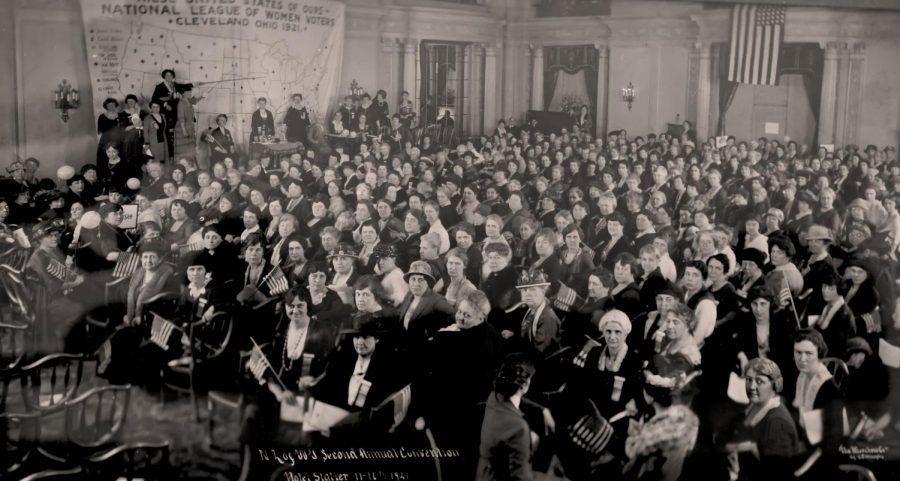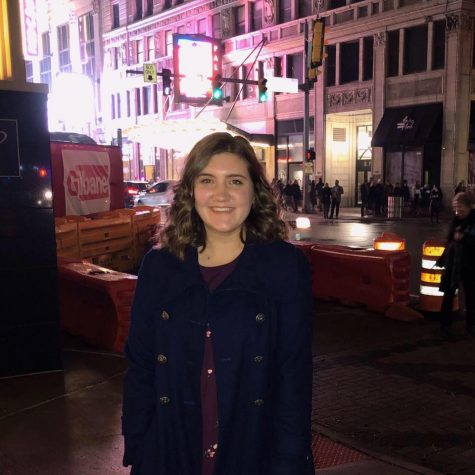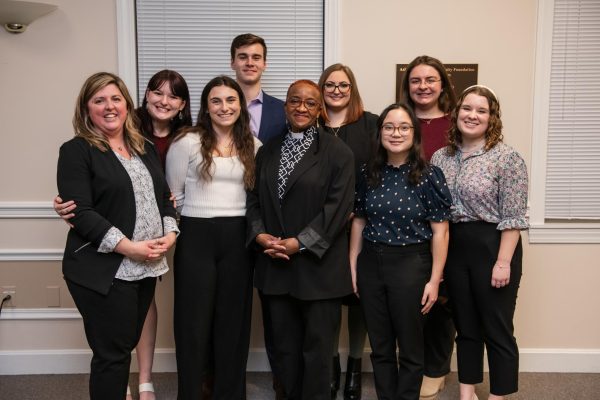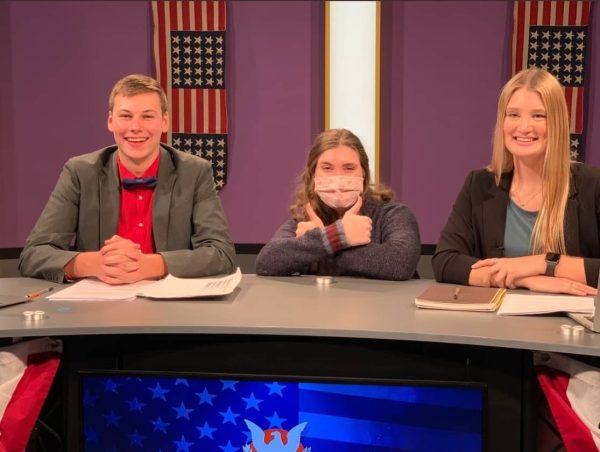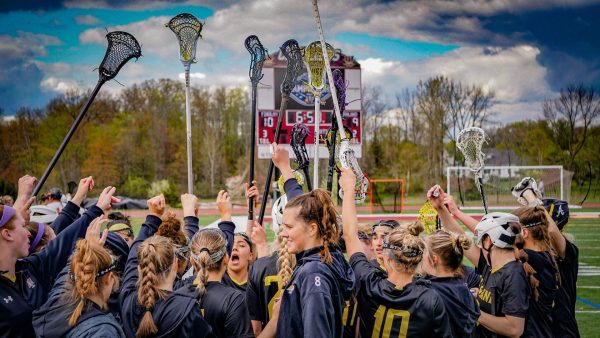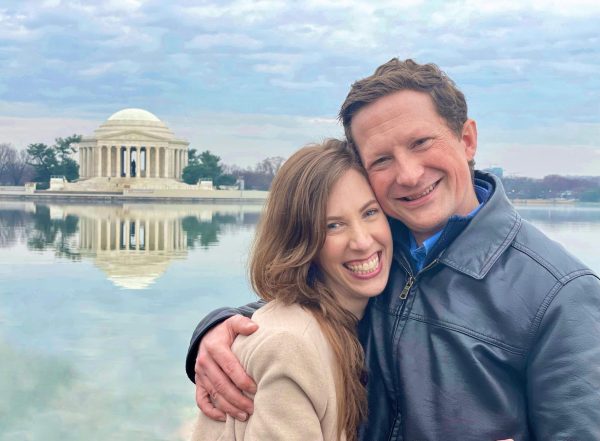100 years of votes for women
The second annual National League of Women Voters convention. Hotel Statler 11/11/1921.
March 4, 2020
Almost 100 years have passed since women were granted the right to vote on Aug. 18, 1920. Educators, scholars, doctors, volunteers, visionaries — all women were given the right to have an opinion in politics that would not only affect them, but the world around them.
The history of women’s suffrage is complex with characters who defended both the right for women to vote, and those that saw them as less than a man. Many of the protests and women’s rights events ended with lots of turns that almost caused the downfall of the 19th Amendment.
Dr. Deleasa Randall-Griffiths, professor of communication studies, has taken a great interest in women’s history and began acting in living history performances as Carrie Chapman Cat after being inspired by a photograph passed down to her from within her family.
“I’ve been studying [the women’s suffrage] for more than five years and towards the end, it truly is like a nailbiter. I know how it ends, but I never knew how close it was to not passing,” Randall-Griffiths said.
She learned a great amount through the books she chose for campus and community members to discuss in the setting of a book club in honor of the centennial approaching.
Randall-Griffiths called her book discussion “a small way to honor the centennial.” There are efforts going on all over Ohio to honor the women that fought for these rights.
“I’ve gone to some meetings down at the Ohio History Connection in Columbus and they’ve got a taskforce and a website,” she said. “There are places all over the state that will be hosting parades with people dressed in costume as ‘votes for women’ and suffragists.’”
According to Gloria Steinem’s book, “The Women’s Suffrage Movement,” being discussed by the AU book club, there is a difference between the terms suffragists and suffragette. Suffragette served as a more of a derogatory term.
The British movement was more violent and protests there often involved rock throwing. These protestors were known as the “suffragettes.”
Whereas, suffragists took to standing in front of the nation’s capital and in front of the men who held great power. This paved the way for the gradual success of the suffragists, they knew that words had more power than rock throwing.
Facing a large group of women, angry and passionate about their voices in society, is what sparked change and created history.
Personal impact and inspiration from the vote
Dr. Cara Rogers, professor of history at AU, specializes in American history and has taken a personal approach to the centennial event with remembrances of her past and studies of the amendment.
Rogers has spent much of her time thinking about the rights and freedoms that are granted based on sex, race and religion.
Growing up in South Africa, Rogers spoke about her upbringing being vastly different from a lot of other people.
When she went out to dinner with her family, she did not hide under the table and pester her parents — she checked under the table for bombs.
South Africa has become freer since Rogers left at a young age, but it still has race and gender discrepancies.
“Shortly after we left, the system started to fall apart and laws changed. My mom and dad were able to go to the embassy in Washington D.C.,” Rogers said. “They had to be the ones to change the Constitution, and they did. The whole country changed after that.”
This peaked Roger’s interest in law and the governing words which dictate the freedom of individuals.
“It was difficult for people in the 1770s to imagine that freedom meant we should all be able to vote,” she said. “One of the best parts of American history is how women started asking for that right. It took a long time, but eventually they were able to get enough men who supported them and encouraged them so that this amendment was ratified.”
In the time period of protests, America had just fought in the first World War, which ended in 1918. The amendment had been proposed in 1878 and it wasn’t ratified until two years following the end of the war in 1920.
According to Rogers, part of the reason for the close timing between the two events was because women had stepped up in many visible and important ways to support the war effort.
Even Woodrow Wilson had been opposing it because of the war, but eventually began to support it after witnessing the service to the country.
Women joined all the branches of the military. They didn’t fight, but they served very important roles, such as nurses and telegraph operators.
Around that same time period, women had been working long and hard to change opinion at the state level, but some states still not allow women to vote in any election at all. Fifteen states were allowing women to vote in every election, while seven continued to deny the right.
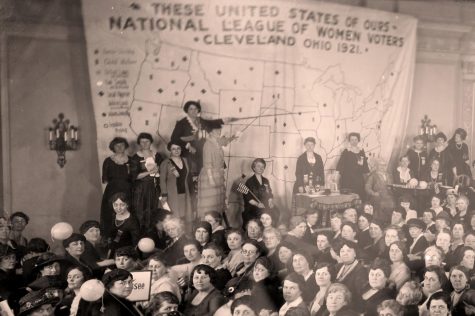
Carrie Chapman Catt, who started the League of Women Voters and was President of the National American Woman Suffrage Association, stands in light clothing against the banner.
“I think there’s a lot of evidence that there were people during that time period and people who signed the Declaration who literally believed all of us are created with inherent rights, all of us are in fundamental ways equal,” Rogers said.
An inside look into living history
Matha Buckner, executive director of the Ashland Symphony Orchestra, participated in the living history event at the Ashland Community Women’s Fund event in late October and found herself representing an Ashland woman who made a large impact on the city.
“[Judge Mildred Myers] was the first woman to be an elected official in Ashland County. She joined the Bar before a college education was necessary,” Buckner said.
She studied at a law office while she was a secretary, where she worked in the juvenile court.
“I’ve done [living history] three times, and it’s difficult to cover women before the 1970s because there’s not a lot of information on them,” she said.
The history of women has impacted Buckner since she was a child. She was raised by women and said that she had strong leaders to follow all of her life.
This began her interest in women’s rights and creating opportunities for community members to remember historical figures from and around the Ashland area.
“I think it’s important to have events to celebrate women because it shows younger women that they can have a role in their community. They can have an impact of significance and be influential,” Buckner said. “Ashland has a lot of strong, influential women like Elizabeth Pastor and Lucille Ford.”


